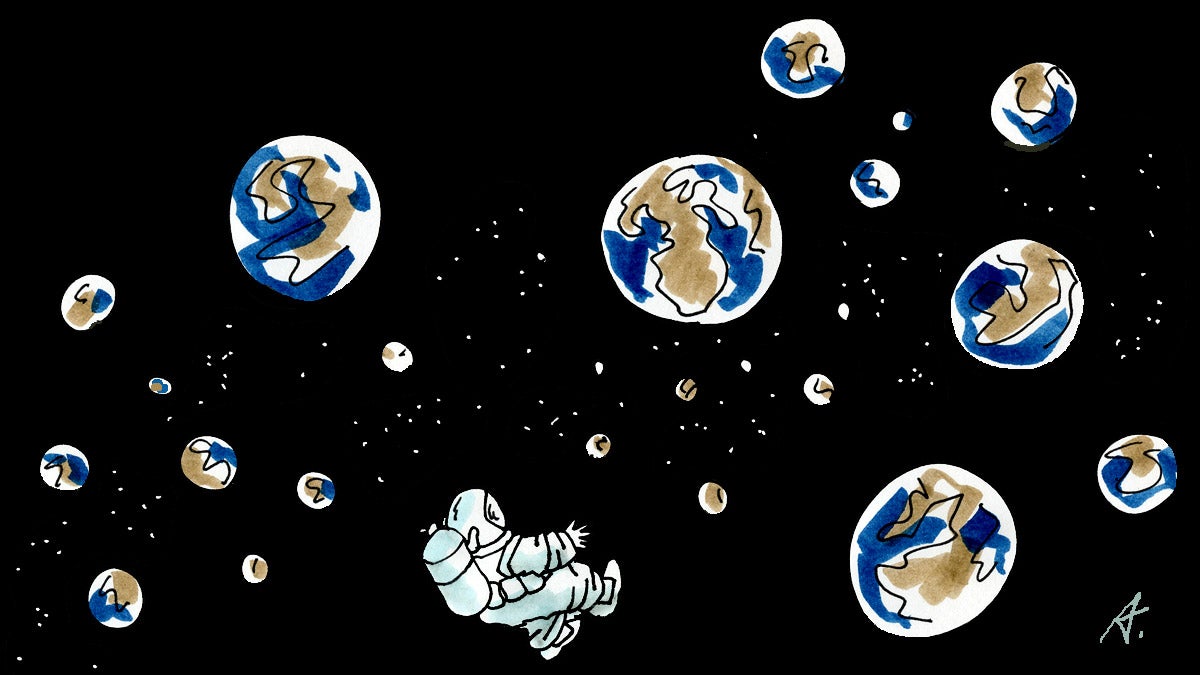NASA announces an abundance of habitable worlds

Many habitable worlds, but nobody is answering our calls.
For millennia, people have looked up at the stars and had no idea what they were seeing.
It’s only been in the last few centuries that anyone realized stars might be suns, or that Earth was a planet, as opposed to the center of the universe.
The concept of a multiplicity of suns orbited by numerous worlds emerged in a big way during the Renaissance. Here’s noted astronomer, philosopher and heretic Giordano Bruno in 1584:
In space there are countless constellations, suns and planets; we see only the suns because they give light; the planets remain invisible, for they are small and dark. There are also numberless earths circling around their suns, no worse and no less than this globe of ours.”
This is more than a hypothesis – it’s a vision. Bruno boldly goes where the human mind can venture once untethered from religious dogma and the human tendency to see ourselves at the center of things.
He had reason behind him, and courage and imagination, but he had no hard data.
Now we have the data – so much so that NASA turned Bruno’s vision into a percentage – announcing on Monday that about one in five sun-like stars has a planet that could potentially harbor life.
The figure comes from a space telescope called Kepler, launched in 2009 with the goal of taking a galactic census. Kepler observed a sample of stars big enough to generalize to the rest of the galaxy. Kepler can’t literally see planets, but it can detect them indirectly when they cross in front of their stars and create a slight dip in the starlight.
Using ground-based telescopes, scientists announced the first indirect detection of a so-called extrasolar planet back in 1995. It was a lot bigger than Earth and a lot closer to its sun. Giant planets are easier to detect than earth-sized ones, but like our solar system’s behemoths Saturn and Jupiter, giant planets tend to have no solid surface. It’s also much easier to detect planets orbiting close to their stars, so the first planets found were likely too hot for life as we know it.
But after Kepler’s mission, it seems we live in a galaxy teeming with planets of various sizes and temperatures. There are hot planets and cold planets and a good number of just-right planets.
Still, most of the stars in our galaxy are much cooler and smaller than our sun – a category known as red dwarfs, said Villanova University astronomer Edward Guinan. They make up about 80 percent of the population of our galaxy, and the Kepler mission already showed that a good fraction of red dwarfs also have planets orbiting at a livable distance.
Guinan has studied conditions around red dwarfs, and believes it’s possible for living planets to orbit them, albeit with a couple of hazards. First, such planets would have to orbit these cool stars much closer than we do our sun, and that would make them subject to deadly solar flares. And being in a close orbit, tidal forces would stop these planets from rotating. They would show the same face to the sun all the time. Day and night would not be times but places, and life would probably have to exist on the dark side, he said, or on the edges where it would be perpetual dusk.
Our newfound understanding of the cosmos still leaves open the question of why nobody on any of these other worlds has tried to contact us. Scientists involved in the SETI project have been listening for decades and come up with nothing so far.
It’s hard for scientists to estimate how many planets are actually inhabited because we don’t fully understand how life originated and exactly what conditions are necessary. We know life started early in Earth’s history, suggesting that it doesn’t necessarily take any extraordinary amount of time once conditions become suitable. But for all we know intelligent, technological life is rare, so nobody out there has the desire or the technology. Or maybe intelligent life is so common that we don’t stand out – we’re just another planet in the crowd.
WHYY is your source for fact-based, in-depth journalism and information. As a nonprofit organization, we rely on financial support from readers like you. Please give today.

